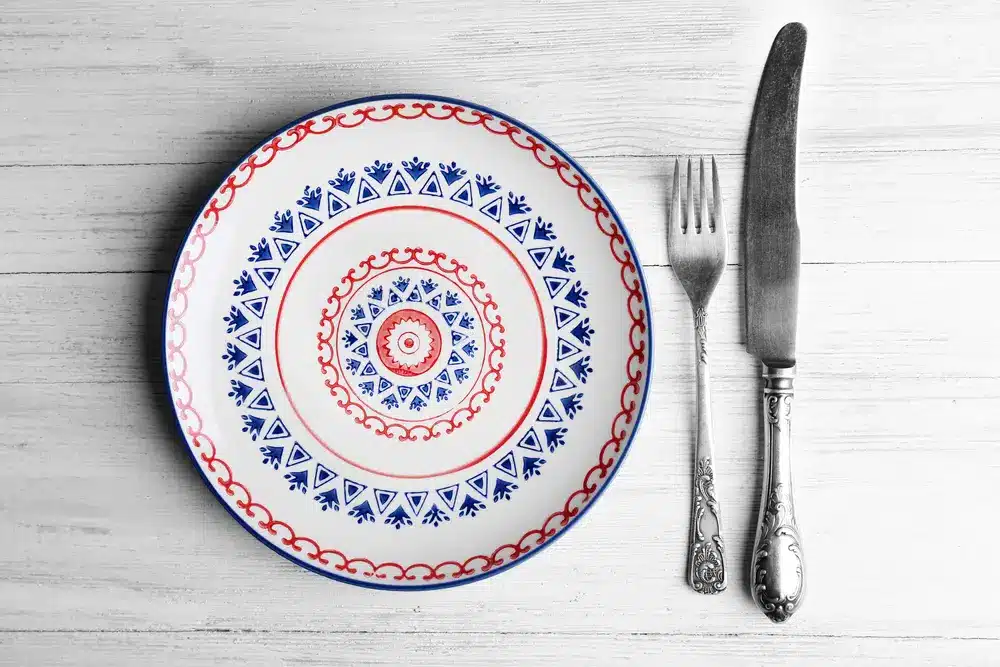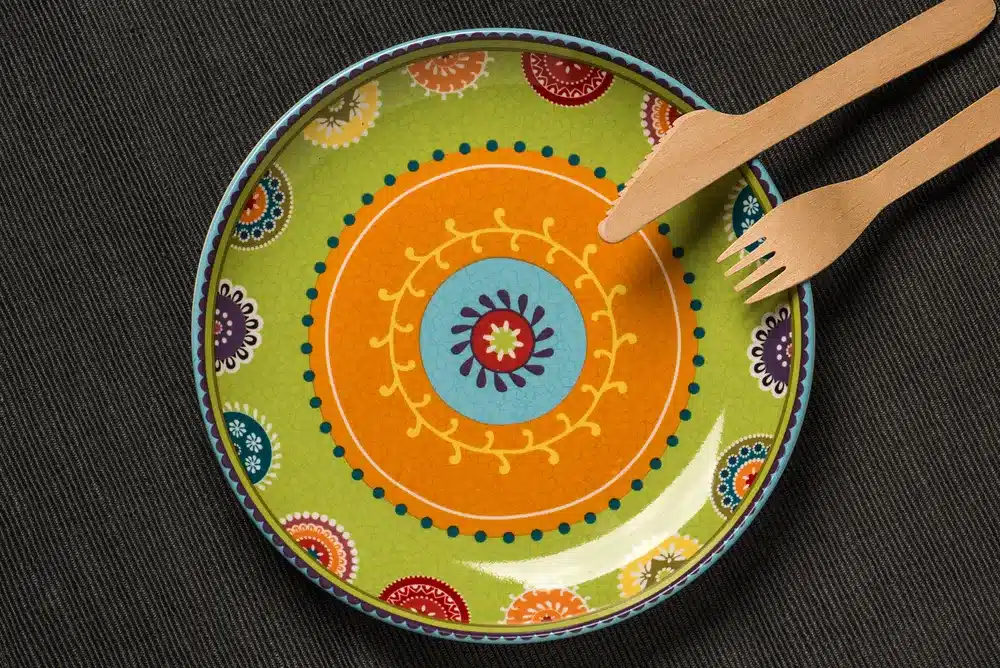Are you a fan of sublimation plates, with their vibrant designs and unique printing process? But have you ever wondered if these plates are safe to use for your food?
The safety of sublimation plates for food use has become a growing concern among many individuals.
In this article, we aim to address this concern and provide you with the clarity you need to make informed decisions about using sublimation plates in your everyday life. We will explore the safety of sublimation plates and address questions about the safety of the sublimation coating and ink used in the printing process.
Key Takeaways:
- Sublimation plates are a popular choice for their vibrant designs and unique printing process.
- The safety of sublimation plates for food use has raised concerns among many individuals.
- It is important to determine if sublimation plates are microwave safe by checking the label or performing a microwave safety test.
- Sublimation plates are typically made of materials like ceramic, plastic, and glass, which are generally considered safe for microwave usage.
- Proper care and maintenance are essential to maintain the food safety of sublimation plates.
Are Sublimation Plates Food Safe?
As long as you use a food safe substrate, like porcelain or glass, sublimated plates are safe for food. The high temperatures used in sublimation ensure that any bacteria on the surface of the plate are killed.

However, it’s important to note that sublimation doesn’t penetrate very far into the substrate, so it’s only effective on the surface of the material. If there are any cracks or chips in the plate, bacteria could potentially enter the substrate and contaminate the food.
To ensure that your plates are food safe, it’s important to inspect them before each use. If you see any cracks or chips, throw the plate away and use a new one.
It’s also a good idea to wash your plates after each use, even if they don’t appear to be dirty. Washing your plates with hot water and soap will remove any residue that might be on the surface of the plate and help to prevent bacteria from growing.
In conclusion, sublimation is a food safe process as long as you use the right materials.
Be sure to use a food safe substrate, like porcelain or glass, and inspect your plates before each use. If you see any cracks or chips, throw the plate away and use a new one. Wash your plates with hot water and soap after each use to remove any residue and prevent bacteria from growing.
Determining if Sublimation Plates Are Microwave Safe
When it comes to using sublimation plates, one question that often arises is whether they can be safely used in the microwave.
Microwave safety is an important consideration, as using non-microwave safe plates can lead to damage or even pose a safety risk. So, how can you determine if your sublimation plates are microwave safe?

The first step is to check the label or box that came with your sublimation plates. Some plates may have a microwave-safe label, typically indicated by wavy patterns.
This label ensures that the plate has been tested and verified to be safe for use in the microwave. If your sublimation plates have this label, you can confidently heat up your food without any worries.
However, not all sublimation plates come with a microwave-safe label. In such cases, you can perform a simple test to determine their microwave safety.
Fill the plate with water and place it in the microwave alongside a microwave-safe mug. Heat the water and mug for a short duration, following the instructions for the mug.
If the plate remains cool while the mug heats up, it is likely safe to use in the microwave. However, if the plate becomes hot or shows any signs of damage, it is best to avoid using it in the microwave.
Ultimately, it is important to remember that not all sublimation plates are microwave safe. Always check for labels or perform the simple water test to ensure the safety of your plates.
This way, you can enjoy the convenience of using your sublimation plates in the microwave while keeping your food safe.
| Pros of using microwave-safe sublimation plates | Cons of using non-microwave-safe sublimation plates |
|---|---|
|
|
By ensuring the microwave safety of your sublimation plates, you can confidently use them for heating up your favorite meals and snacks. Whether you have labeled microwave-safe plates or have performed the water test, always prioritize your safety and the preservation of the plate’s design.
Materials Compatibility and Usage Guidelines for Sublimation Plates
When it comes to sublimation plates, it’s important to consider the materials used and follow the usage guidelines provided by the manufacturer to ensure their safe and proper use. Sublimation plates are typically made of materials such as ceramic, plastic, and glass, which are generally considered safe for microwave usage.

However, it is crucial to check the label or perform a test to ensure the specific plate is safe for microwave use.
Certain materials, such as metals and certain types of plastic, should never be used in the microwave as they can cause sparks or release harmful chemicals. This is why it’s essential to verify the microwave safety of sublimation plates before using them in this manner.
Always refer to the manufacturer’s guidelines and avoid using sublimation plates made from materials that are not suitable for microwave usage.
Additionally, it’s worth noting that sublimation plates may have different temperature tolerances depending on the material.
Some plates may be dishwasher safe, while others may require handwashing to maintain their integrity. Again, it is crucial to refer to the usage guidelines provided by the manufacturer to ensure you are using sublimation plates safely and effectively.
By considering the materials used and following the usage guidelines, you can use sublimation plates with confidence, knowing that you are using them in a manner that is both safe and appropriate.
Whether you plan to use them for everyday meals or special occasions, taking these factors into account will ensure the longevity and performance of your sublimation plates.
| Material | Microwave Safe | Dishwasher Safe |
|---|---|---|
| Ceramic | Yes | Varies |
| Plastic | Varies | Varies |
| Glass | Yes | Yes |
Table: Materials Compatibility and Usage Guidelines for Sublimation Plates
Care Instructions to Maintain Food Safety of Sublimation Plates
Proper care and maintenance are essential to ensure the food safety of sublimation plates. By following these care instructions, you can prolong the lifespan of your plates and keep them looking vibrant and clean.
Cleaning Sublimation Plates
When it comes to cleaning your sublimation plates, it’s best to use mild dish soap and warm water.
Avoid using abrasive sponges or brushes that can scratch the surface of the plate and damage the design. Instead, opt for a soft cloth or non-abrasive sponge to gently clean the plates.
Rinse thoroughly to remove any soap residue and pat dry with a clean towel. This will help maintain the integrity of the design and prevent any potential transfer of chemicals or contaminants to your food.
Avoiding Damage to Sublimation Plates
To prevent damage to your sublimation plates, avoid exposing them to extreme temperatures. While sublimation plates are generally safe for microwave use, it’s important to follow the usage guidelines provided by the manufacturer. Avoid placing the plates directly on a stovetop burner or in the oven, as this can cause the design to warp or fade. Additionally, avoid using metal utensils or cutting directly on the plate, as this can scratch the surface and compromise the food safety of the plate.
Storing Sublimation Plates
When not in use, it’s best to store your sublimation plates in a cool, dry place away from direct sunlight. Prolonged exposure to sunlight can cause the colors to fade and degrade over time. Consider using plate separators or soft padding to prevent any potential scratching or chipping during storage. By taking these simple steps, you can ensure the longevity and food safety of your sublimation plates.
Table: Cleaning and Maintenance Recommendations for Sublimation Plates
| Step | Recommendation |
|---|---|
| Cleaning | Use mild dish soap and warm water to gently clean the plates. Avoid abrasive sponges or brushes. |
| Avoid Extreme Temperatures | Avoid placing plates directly on stovetop burners or in the oven to prevent warping or fading of the design. |
| Utensils | Avoid using metal utensils or cutting directly on the plate to prevent scratching. |
| Storage | Store plates in a cool, dry place away from direct sunlight to prevent color fading and degradation. |
Conclusion
In conclusion, when it comes to the food safety of sublimation plates, it is important to consider various factors. By following the proper guidelines and taking necessary precautions, you can enjoy the vibrant designs and personalization of these plates without compromising your safety.
Firstly, always look for clear indications of microwave safety on the label or box of the sublimation plate. If you don’t find any explicit indications, you can perform a simple test by microwaving the plate alongside a microwave-safe mug filled with water. If the plate remains cool while the mug heats up, it is safe to use in the microwave.
Secondly, be mindful of the materials used in the production of sublimation plates. Ceramic, plastic, and glass plates are generally safe for microwave usage. However, it is essential to check the label or perform a test to ensure the specific plate you have is suitable for microwave use. Remember to avoid using metals or certain types of plastic that can cause sparks or release harmful chemicals.
Lastly, proper care and maintenance are key to maintaining the food safety of sublimation plates. Avoid exposing the plates to hot elements and refrain from using abrasive wipes that may damage the design. Also, steer clear of bleach or strong chemicals as they can cause the design to fade or dissolve. Additionally, try to avoid prolonged exposure to direct sunlight, as it can degrade the quality of the design over time.
FAQ
Are sublimation plates safe for food use?
Sublimation plates can be safe for food use if they are labeled as microwave-safe or pass the microwave safety test. It is important to choose the right materials for sublimation plates and follow the usage guidelines provided by the manufacturer.
Can I safely use sublimation plates in the microwave?
The best way to determine the microwave safety of sublimation plates is by checking the label or box for explicit indications of microwave safety. Some sublimation plates may have a microwave-safe label with wavy patterns, indicating their suitability for microwave usage. If there is no label or indication, a test can be performed by filling the plate with water and microwaving it alongside a microwave-safe mug. If the plate remains cool while the mug heats up, it is safe to use in the microwave.
What materials are sublimation plates typically made of?
Sublimation plates are typically made of materials such as ceramic, plastic, and glass, which are generally considered safe for microwave usage. However, it is crucial to check the label or perform a test to ensure the specific plate is safe for microwave use. Certain materials, such as metals and certain types of plastic, should never be used in the microwave as they can cause sparks or release harmful chemicals.
How should I care for and maintain sublimation plates?
Proper care and maintenance play a crucial role in ensuring the food safety of sublimation plates. Avoid exposing sublimation plates to hot elements or using abrasive wipes that can damage the design. Bleach or strong chemicals should be avoided as they can cause the design to fade or dissolve. Prolonged exposure to sunlight should also be avoided as it can degrade the quality of the design. Following these care instructions will help maintain the integrity and food safety of sublimation plates.




